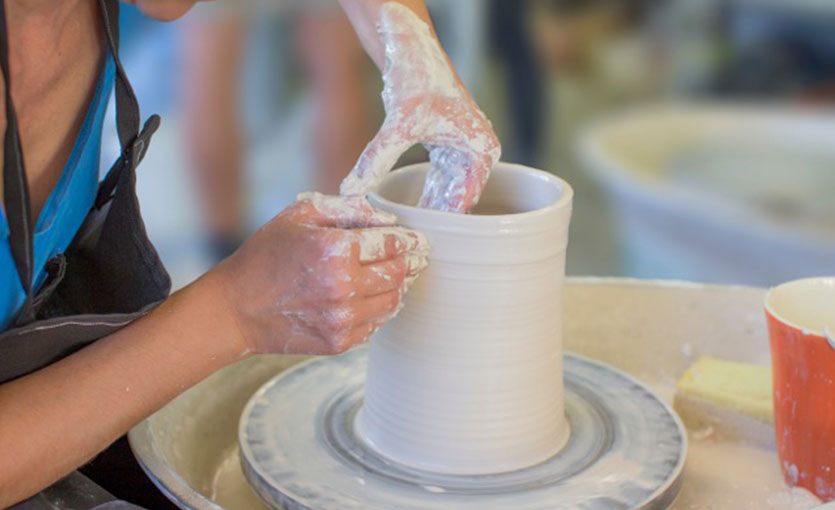
The Versatile World Of Ceramics
Man has used ceramics for centuries, but it was only in the recent era that their application evolved over mechanical properties. As such, ceramics are brittle. They do not have a non-linear plastic region which tends to make them fail in engineering application. While the lack of toughness does curb the uses of ceramics, they still are considered a noteworthy engineering material along with metals and plastics.
Ceramics are synthetic and typically made of materials like:
- Feldspar
- Talc
- Clay
- Silica
Called silicates, these minerals that make ceramic are primarily found in the crust of the earth. When chemically made, ceramics are created out of a mix that doesn’t incorporate silicate. Such ceramics are:

- Alumina
- silicon carbide
- barium titanate
The standard items where you will find ceramics are:
- Glass
- Porcelain
- Cement
- Bricks
- Material used in electronics
- In spacecraft
It is the ability of ceramics to resist both chemicals and heat that make them useful. Based on the mineral component, some other elements that ceramics are resistant to are:
- Gases
- Water
- Salts
- Acids
Generally, ceramics do not conduct electricity, but in a few cases, when supercooled, they transform into superconductors. It should be noted that not all ceramic items have the same properties. By changing the ratio of the material of the ceramic, the features can be varied.
How Ceramics Are Used In Different Industries?
- The versatility of the properties of ceramics has made them applicable in various industries. A handful of them are listed below:
- Structure material like pipes, blocks, roof tiles, stones, and bricks for buildings because they have compressive strength.
- Tiles for interiors of ovens or exterior of space shuttles because of their extreme thermal insulation. For the same reason, they are used in:
kiln linings
gas fire radian
steel and metal fabrication crucibles
glass making crucibles - In transmitters because they are transparent to electromagnetic waves and other radars.
- Spark plugs and voltage insulators as they have nil electrical conductivity.
- Biomedical gadgets like dental implants and prostheses as they are chemically inert.
- Optical equipment and fibres as glass-ceramics can withstand extreme temperatures.
- In ballistic protection, missile nose cones, nuclear fuel pellets, and turbine blade of jet engine fine ceramics are used. They are also called Engineering, technical or advanced ceramics. These do not contain any clay.

- Pottery, tableware, sanitary wares, and tiles are some common uses of them.
While dinnerware may be the most recognised application of ceramics, there are particular special applications of them because they are impervious to many elements, significantly hard and survive abrasion. For instance, they are utilised to: - Cut metals
- Polish or grind materials
- Sand surfaces
These rigid ceramics tend to be made of silicon carbide and alumina. If the ceramic is composed of silica, magnesium, and zirconium oxide, they are applied in refractories. Check Out – the applications of Ceramics in industries.
Use Of Ceramics In The Metal Industry
- The plethora of components that can be employed to make ceramics give them a range of properties. These properties can then be utilised in various industries, as is apparent above. The one sector where ceramics are appropriated widely but rarely acknowledged is Metal Fabrication. Let’s explore how ceramics are incorporated in the metal industry.

- When metals are processed or machined, the tools utilised are generally composed of ceramics. Sometimes these tool components are made from a metal cum ceramic composition. These tools are now industry standard because they are cost-worthy.
A handful of areas where these tools are applied are:
- Stamping or punching
- Wire-drawing
- Machining of steel
- Extrusion
- Manual tooling
- Deep-drawing
- Ceramics are also put to work for working on surfaces of metals such as milling. The kind of ceramic utilised depends upon the application.
An example of the ceramic used for metal fabrication such as sheet metal drawing is one that contains:
- Al2O3
- Al2O3-ZrO2-mixed ceramics
- doped ZrO2
- Si3N4
Ceramics have been in use for decades in various industries and will continue to be so for many years.
